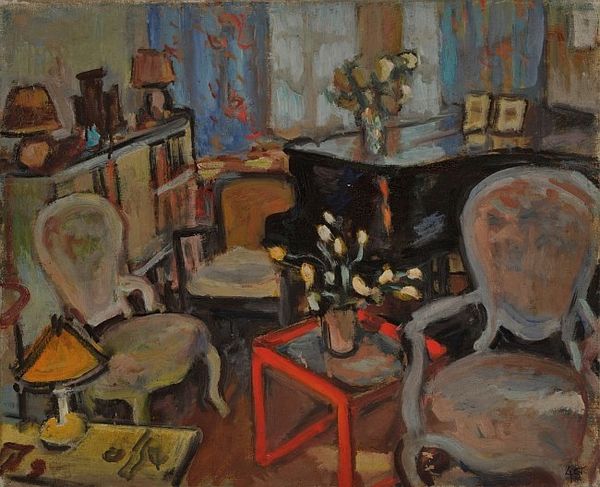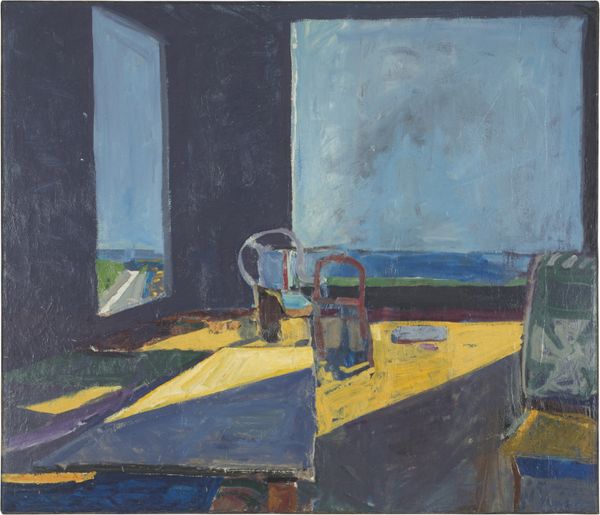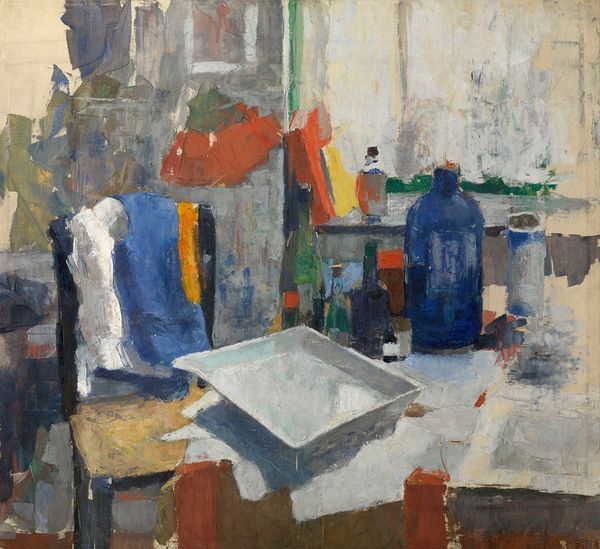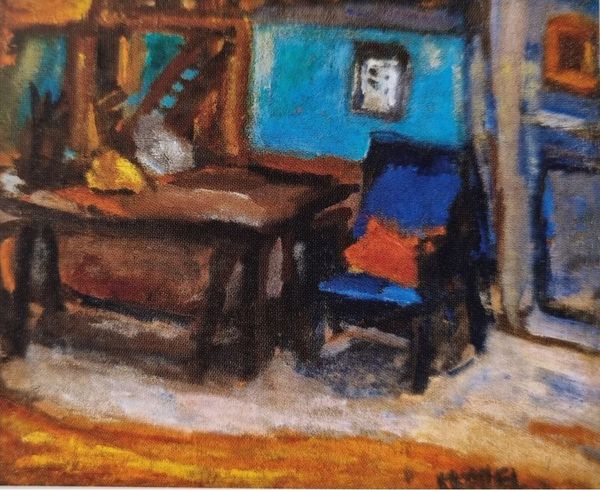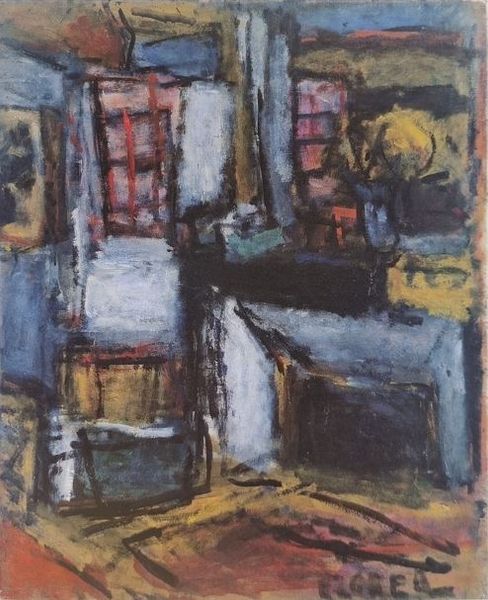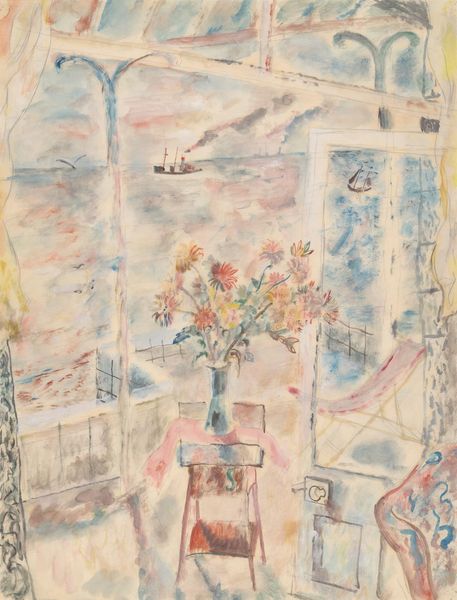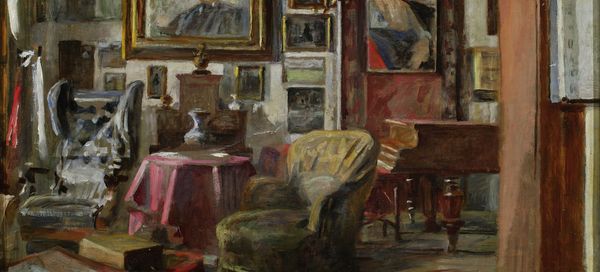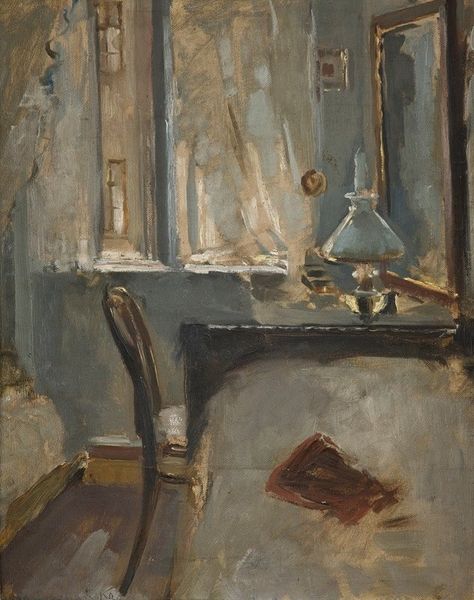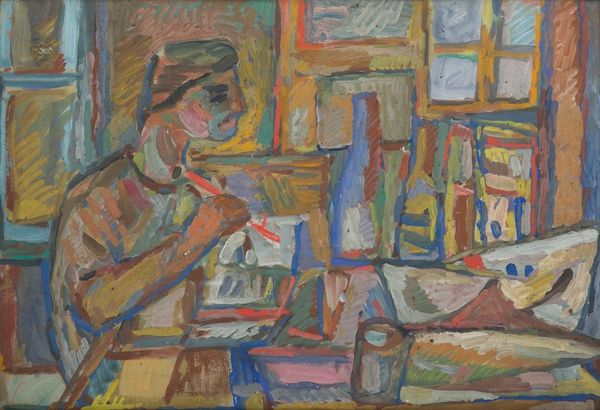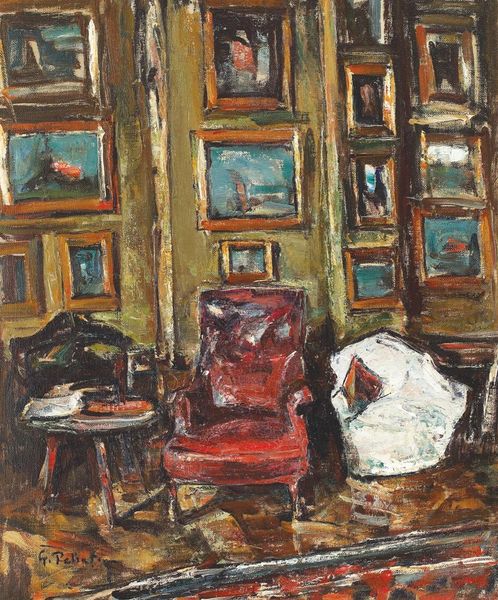
Copyright: Public domain
Editor: Here we have Harriet Backer's "Interior from Einabu in Foldal," painted in 1920, likely en plein air in watercolors. It’s all cool blues and tentative light. What do you see in this piece? Curator: This painting is less about a specific interior and more about the quality of light and its effect on the space. It reflects the post-WWI disillusionment, that longing for tranquility. Notice how the cool blues and muted palette speak to a desire for retreat from a chaotic world. Consider how class and gender influenced Backer's perspective, given that female artists often found their subjects within the domestic sphere. How do the quiet intimacy and use of watercolor convey ideas around femininity and domesticity in 1920s Norway? Editor: That's interesting. I didn't immediately connect it to the socio-political context of the time. Curator: Art is never made in a vacuum. Even seemingly simple interior scenes carry coded information about society and the artist’s position within it. The loose brushwork and almost unfinished quality might reflect a changing role for women in art and society – moving away from strict academic traditions and toward more personal expression. It seems she is breaking free. Editor: So the painting is suggesting something beyond just a simple room? Curator: Precisely. Backer seems to be less invested in representing the room accurately and more invested in portraying atmosphere and personal feeling through color and light. It seems like a feminist approach through interior design, the windows acting like paintings within a painting! It could be perceived as an assertion of her inner state. What do you think of the perspective through an autobiographical lens? Editor: It completely changes my understanding of the piece. I was focused on the surface, on what was literally depicted, rather than considering the broader implications of the artist's choices! Curator: That’s the power of contextual analysis. Art is not just about what we see, but about how we see and how that seeing is shaped by history, identity, and power dynamics.
Comments
No comments
Be the first to comment and join the conversation on the ultimate creative platform.
